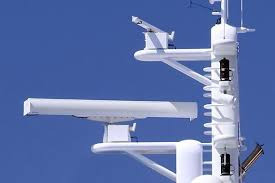views
The marine radar market plays a critical role in modern maritime operations, offering solutions for navigation, surveillance, collision avoidance, and security. However, despite technological advancements and increasing demand, the market faces several significant restraints that are hindering its full potential. From cost concerns and complex integration to regulatory and operational challenges, these limitations are slowing the rate of adoption and innovation, especially among smaller fleet operators and in emerging markets. This article provides an in-depth analysis of the key restraints shaping the current and future landscape of the marine radar industry.

1. High Capital Costs and Affordability Issues
One of the most prominent restraints in the marine radar market is the high cost of advanced radar systems. Modern radar technologies, particularly solid-state and phased-array systems, require substantial investment—not only for procurement but also for installation, calibration, and maintenance.
This cost barrier is particularly burdensome for small to medium-sized operators, such as local fishing fleets, recreational boat owners, and smaller shipping companies. Many of these operators continue to rely on older systems or forego radar altogether, limiting market penetration in this segment.
2. Technical Complexity and Integration Challenges
As marine radar systems evolve to include advanced features like AI-based tracking, sensor fusion, and real-time data analytics, their technical complexity increases. Integrating radar systems with other onboard navigation and communication systems—such as GPS, AIS (Automatic Identification Systems), sonar, and ECDIS (Electronic Chart Display and Information System)—often requires specialized technical expertise.
Older vessels, in particular, face difficulties during retrofitting due to infrastructure incompatibilities. Inadequate integration can lead to underperformance, operational inefficiencies, and increased risk, discouraging many operators from investing in upgrades.
3. Cybersecurity Vulnerabilities and Data Security Risks
With increasing digitization and connectivity, marine radar systems are becoming more vulnerable to cyberattacks. Unauthorized access, data breaches, spoofing, and jamming can compromise vessel navigation and security, particularly in military and commercial shipping applications.
Many operators lack the cybersecurity infrastructure or expertise to secure their radar systems effectively. Concerns over potential vulnerabilities delay the adoption of connected radar technologies, particularly among government agencies and defense fleets that prioritize information security.
4. Inconsistent Global Regulations and Compliance Costs
Marine radar systems must comply with a complex web of global and regional regulations, such as those enforced by the International Maritime Organization (IMO), regional maritime authorities, and national defense standards. This regulatory fragmentation leads to increased development costs for manufacturers, who must ensure compliance with varying standards.
In addition, the certification process for new radar systems can be lengthy and expensive, delaying product launches and market entry. For operators, compliance requirements increase procurement costs and administrative burdens, further slowing adoption in cost-sensitive regions.
5. Environmental and Operational Limitations
Environmental conditions present natural limitations for radar technology. Sea clutter, heavy rainfall, fog, electromagnetic interference, and extreme sea states can impair radar performance, especially for small vessels that operate closer to shore or in challenging weather.
Despite improvements in clutter reduction algorithms and Doppler radar capabilities, performance degradation remains a key concern in specific operating environments. Operators may be hesitant to invest in systems perceived as unreliable in the conditions they most frequently encounter.
6. Lack of Skilled Personnel and Training Infrastructure
Operating advanced marine radar systems requires skilled personnel for configuration, interpretation, and maintenance. However, many regions—especially developing maritime nations—lack formal training programs, certified courses, or experienced professionals.
This skill gap leads to underutilization of system features, operational inefficiencies, and safety risks. As a result, companies may delay adoption or choose simpler, less capable systems, restricting the growth of the more advanced segments of the radar market.
7. Limited After-Sales Support in Remote Areas
In many parts of the world, especially smaller port cities or islands, there is limited access to certified service technicians, spare parts, and support infrastructure. For vessels operating in these regions, the risk of radar system failure without timely repair support is a serious concern.
Manufacturers that lack a global or regionally distributed support network struggle to build confidence among potential customers. This gap in post-sales service hinders radar adoption outside major maritime hubs.
Conclusion
While the marine radar market holds significant promise due to increasing global maritime activity and technological advancements, several critical restraints continue to hold back its widespread adoption. High system costs, integration difficulties, regulatory hurdles, and cybersecurity concerns are key challenges that manufacturers and users alike must navigate.
To overcome these barriers, industry stakeholders must invest in cost reduction, user training, global service networks, and enhanced system compatibility. Addressing these restraints proactively will unlock the market’s growth potential, making advanced radar systems accessible and reliable for a wider range of users across both commercial and defense applications.



Comments
0 comment